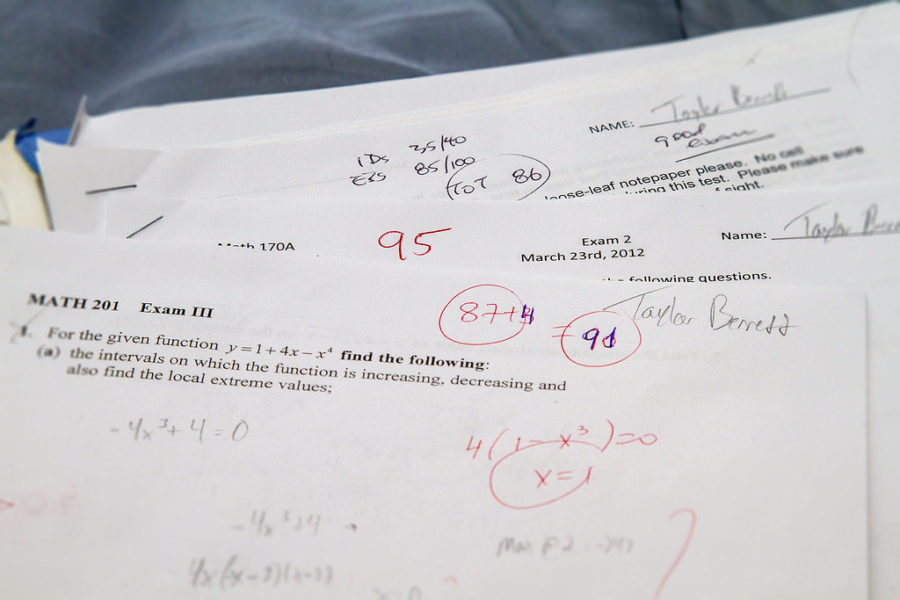Testing: the math isn’t mathing
Too much emphasis is placed on test grades in math classes at Jefferson. One 90 minute test has the impact to make or break a student’s math grade that semester, which is too much pressure to place on one exam.
October 25, 2022
Walk into a math class on test day, and you’ll see students scribbling on their test packets in deafening silence, colorful dividers separating each table group. That one test can be worth over 100 points, and the two to three pages of questions has the power to either raise or drop their grade by full letters.
This is due to the fact that the majority of a student’s grade in a math class are their tests. Varying based on teacher and class, tests are 100 points each, homework is around ten points per unit, test corrections are two points per test, and some classes have begun implementing one point extra-credit quizzes (flashback quizzes).
However, most of a student’s grade is still made up by their unit exams. For example, a unit test might be worth 100 points, but the only other assignments include a ten point homework packet and two points if they did test corrections. That one test grade is then worth just under 90% of their grade for that full unit.
While tests are the most common way of grading students, they are not effective ways to measure understanding. An estimated 40 to 60% of students across the nation experience test anxiety, which has physical and psychological impacts on their ability to focus. Time limits also add unnecessary stress.
There are benefits to certain kinds of testing, though. Short, low-stake quizzes can inform teachers on their students’ knowledge without placing unnecessary stress on the students. Forms of retrieval practice, such as group discussion, in-class worksheets, and spaced review, are other, more effective tools for practice.
Ultimately, testing can be helpful, but the way we are currently doing things is not.
Another common argument is that there aren’t other ways to grade students. In humanities and science classes, for example, presentations, essays, and labs are common alternatives, but there isn’t much to math besides whether or not a student can solve the problem.
However, that isn’t necessarily true. Including the methods previously mentioned, projects, group practice, in-class assignments (for example, a one pager), and innovative grading policies are all other ways teachers grade students without a timed, 100 point test.
These alternatives allow students to get extra practice, teachers to gauge students’ understanding of a certain unit, and more grades that lessen the impact of one test being the make-or-break of a student’s grade.
Tests are undoubtedly an important tool for both teachers and students in measuring their academic abilities and progress, and they won’t be going away any time soon. However, there are other more effective and less stress inducing ways for teachers to collect the same data.









